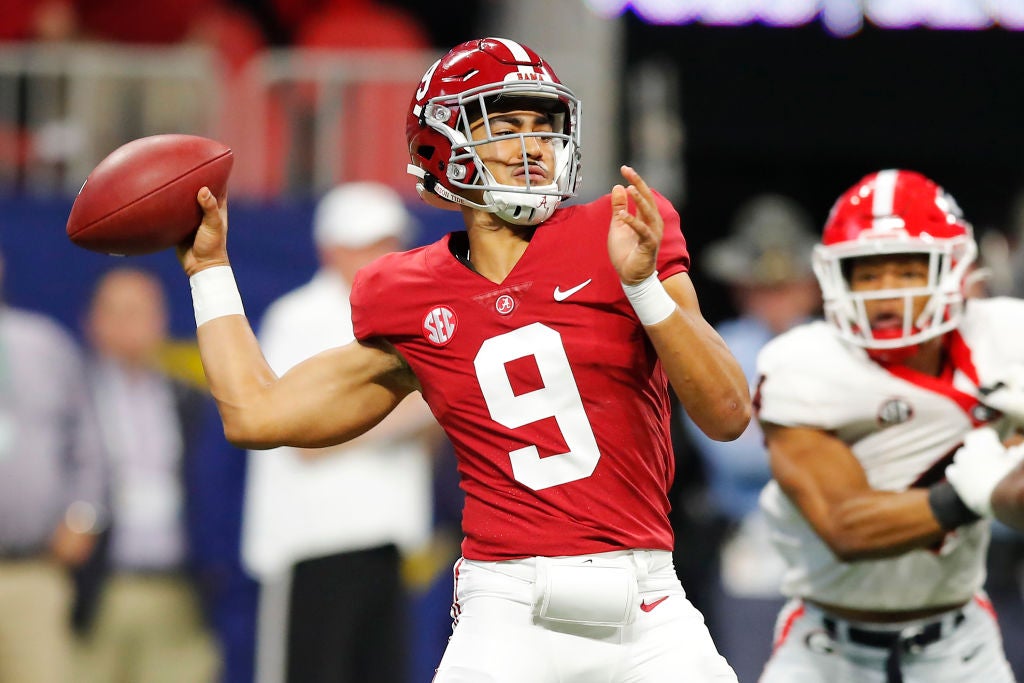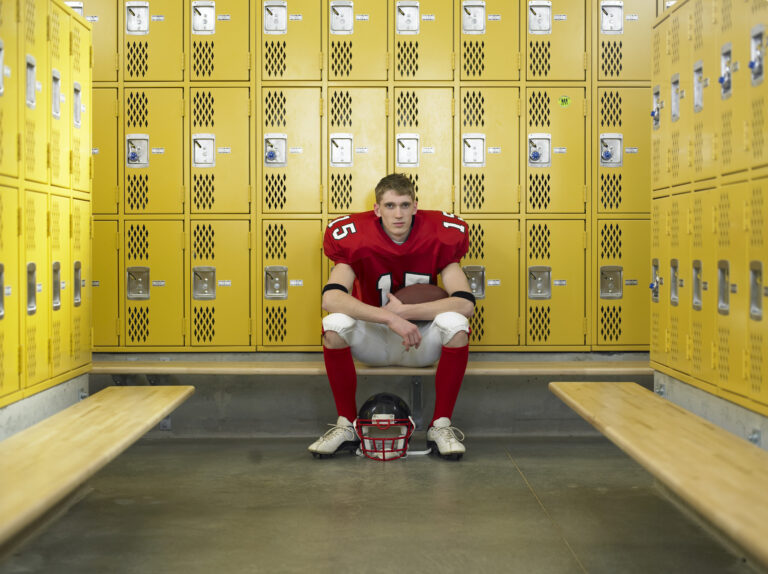American Public Supports NIL Rights for College Athletes But Is Unsure of How They Should Work in Practice
Why this matters
While 2021 was seen as a year of reckoning in college sports, the adoption of a name, image, and likeness policy, commonly called NIL, has been widely supported but has yet to transform Americans’ perception of the NCAA, its member schools, or the athletes cashing in.
There probably aren’t many issues where you’ll find a coalition that includes Supreme Court Justice Brett Kavanaugh, University of Oregon basketball star Sedona Prince, U.S. Senator Cory Booker, and University of Alabama head football coach Nick Saban, but as spring turned to summer this year, all were among the people pushing the National Collegiate Athletic Association to allow college athletes to cash in on their own name, image, and likeness (NIL). In July, the NCAA did exactly that, opening the door to a new source of income and renown for its athletes.
Many within college sports view the NCAA’s decision as the start of an era, with NIL impacting everything from recruiting to marketing to media. But what does the American public think? A new national snapshot poll from Arizona State University’s Global Sport Institute in partnership with OH Predictive Insights finds that while a majority of respondents support NIL deals for college athletes, they are still learning how the current state-by-state patchwork of NIL regulations and opportunities works – and have not formed a strong consensus about how it should work.
Support for NIL Split Along Race, Gender, and Class Lines But Not Expected to Change Consumption Habits
Fifty-three percent of respondents said they agreed with new NCAA rules allowing athletes to make money off their NILs. African-Americans, older millennials, and lower-income respondents were more likely to agree than older, higher-income respondents and those with college degrees.
Interestingly, 63 percent of those who called themselves college sports fans said they supported NIL, showing that the most passionate (and likely informed) people are in support of the NCAA’s rule changes. Still, while African-American men and women reported an increased favorability of college sports in this new NIL world, 70 percent of White respondents said they had a less favorable view. Nearly a quarter, though, said they had heard “nothing at all” about the NIL “debate” in the U.S.
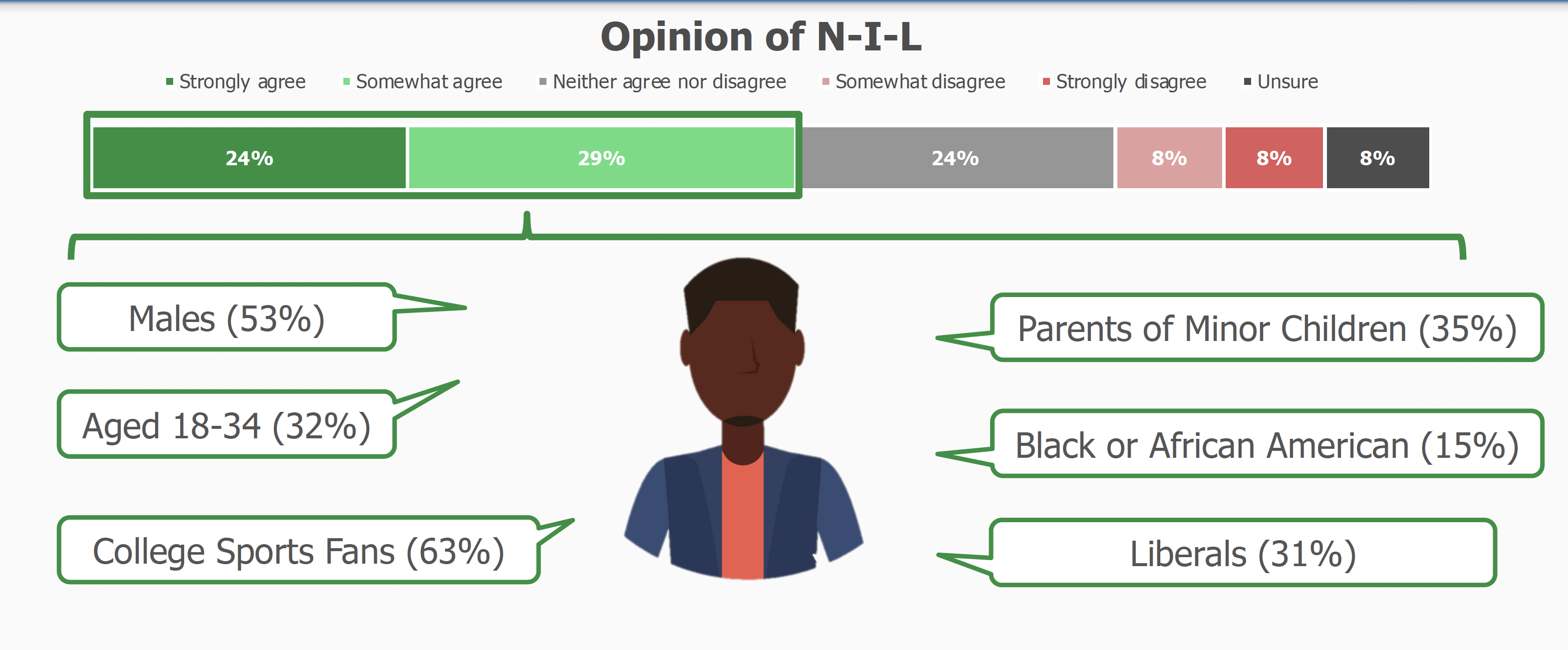
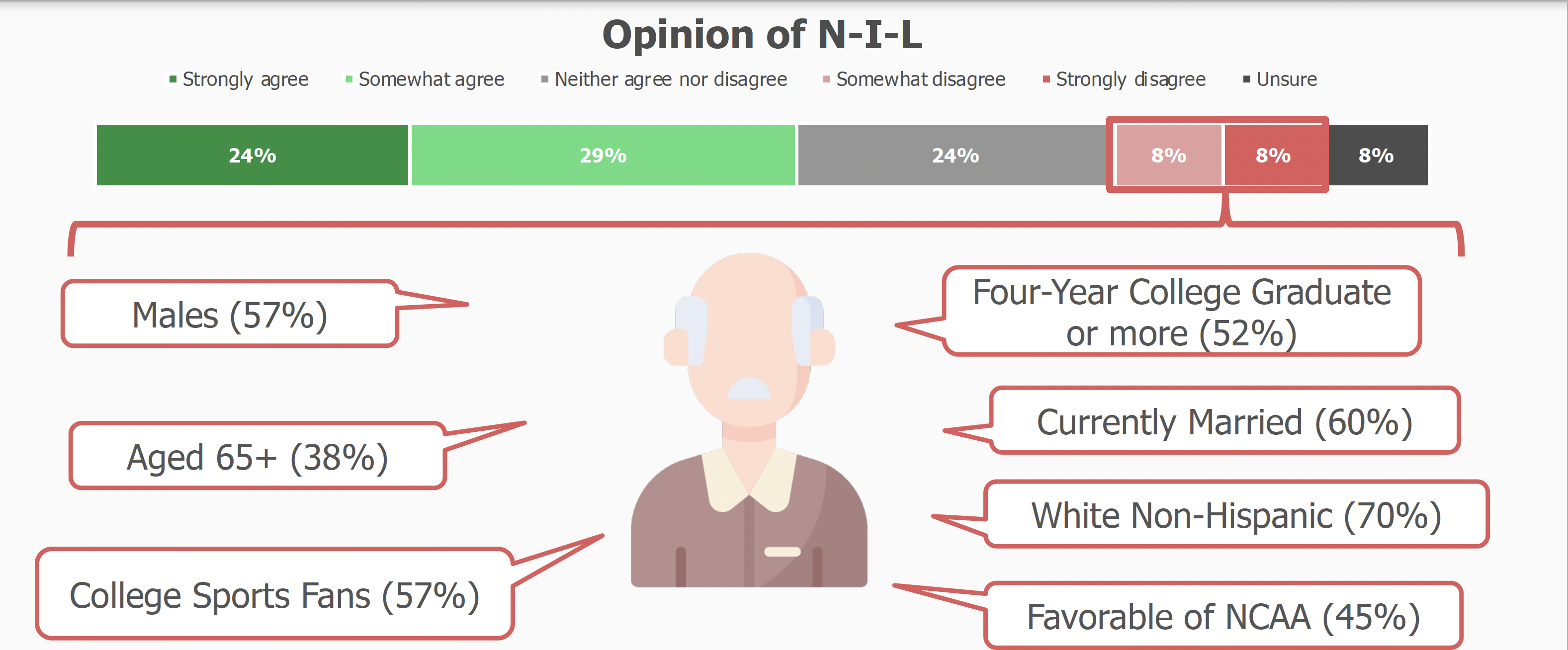
Why the demographic differences? It’s possible that support for NIL is strongest from those who have the most in common with the athletes who stand to gain the most from the NCAA’s rules changes. The proportion of non-White athletes in the NCAA has grown over the past decade, and antitrust research shows Black athletes suffer disproportionately from a lack of compensation for their labor as athletes.
For years, the NCAA justified its prohibition on NIL compensation for athletes by arguing that allowing it would make college sports fans less likely to watch and buy tickets. However, respondents in the ASU GSI poll mostly reported steady college sports consumption habits – regardless of how they reported feeling about NIL rules changes. Just 6 percent said their views of college sports are less favorable because of NIL and would make them less likely to tune in to college sporting events, while only 7 percent said NIL made them view college sports more favorably and made them more likely to watch.
Overall, 51 percent of those surveyed – regardless of how they felt about NIL – said they would watch the same amount of college sports.
One of the more striking elements of the data is that of the Americans with the strongest views on NIL, those who were against NIL were most likely to say it affected their overall perception of college sports. Among respondents who said they were opposed to NIL, 52 percent said the rule changes led to them having a less favorable view of college sports as an institution. This compared to just 30 percent of NIL supporters whose view became more favorable as a result of the same rule changes.
When asked to consider the underlying issues of inequity in NIL, respondents largely believed the NCAA’s biggest current cash cows would strike gold in the new NIL era. Men’s basketball and football heavily outweighed other sports in the minds of respondents when they were asked who would benefit most from NIL opportunities.
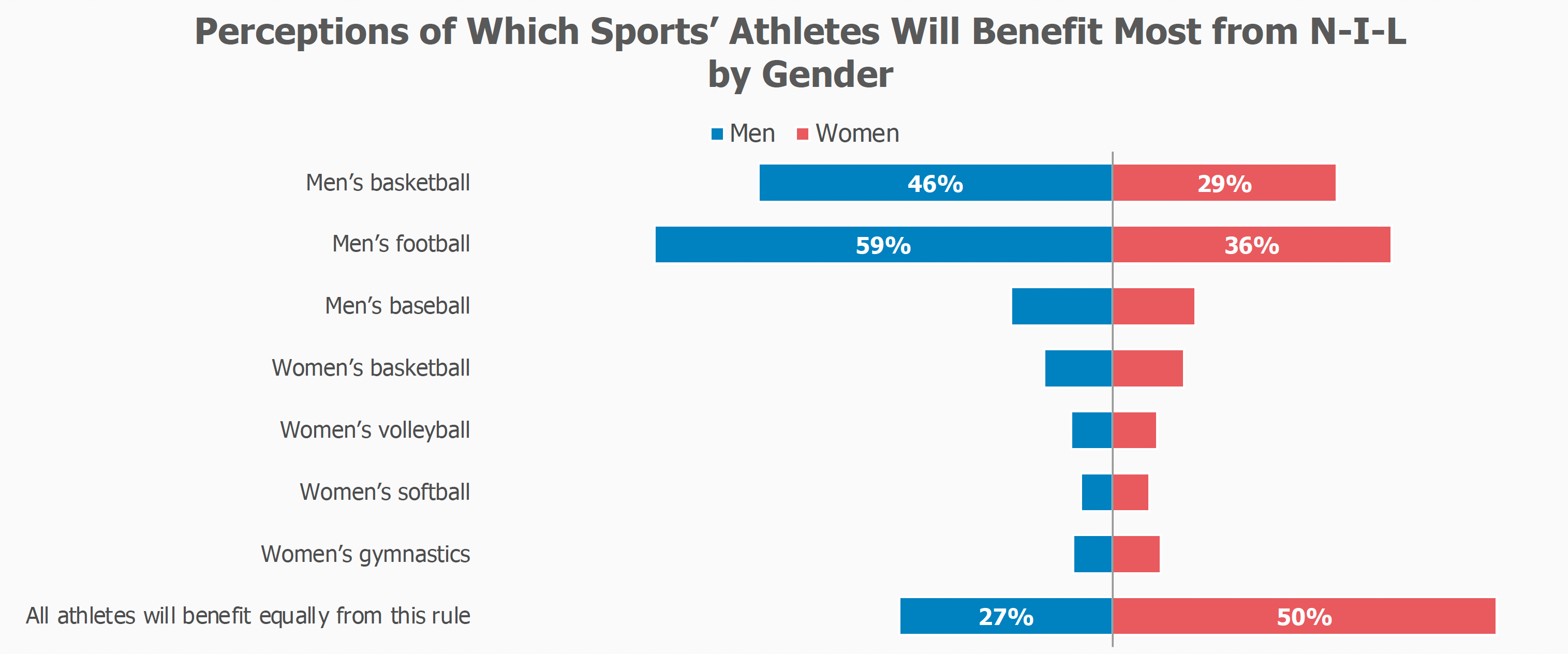
From a demographic standpoint, respondents were unified in the belief that White men would benefit most. African-American respondents in particular indicated a belief that White men (and women to a lesser degree) would benefit at the expense of racial minority athletes.
The Devil in NIL’s Details
Those polled were asked to describe whether the NCAA’s current rules went too far in granting athletes NIL freedoms, did not go far enough in giving athletes the flexibility to make money off their NILs, or were a good “middle ground.” A plurality called current NIL rules a good “middle ground,” and a similar proportion of respondents said athletes should be able to operate independently in crafting deals without the influence of their coaches or athletic departments. This was an area, however, where Americans lacked clarity: 40 percent said they were unsure about the role coaches and universities should play.
Those polled largely preferred the idea of NIL deals for neutral or positively impactful brands over brands that encourage or sell products widely considered social vices, such as cannabis and alcohol companies or gambling properties. Respondents were more favorable to NIL deals in which athletes endorse universities, nutrition products, or even vehicles and dealerships. Education-related deals were most popular among respondents, with a net 32 percent positive sentiment toward allowing those deals.
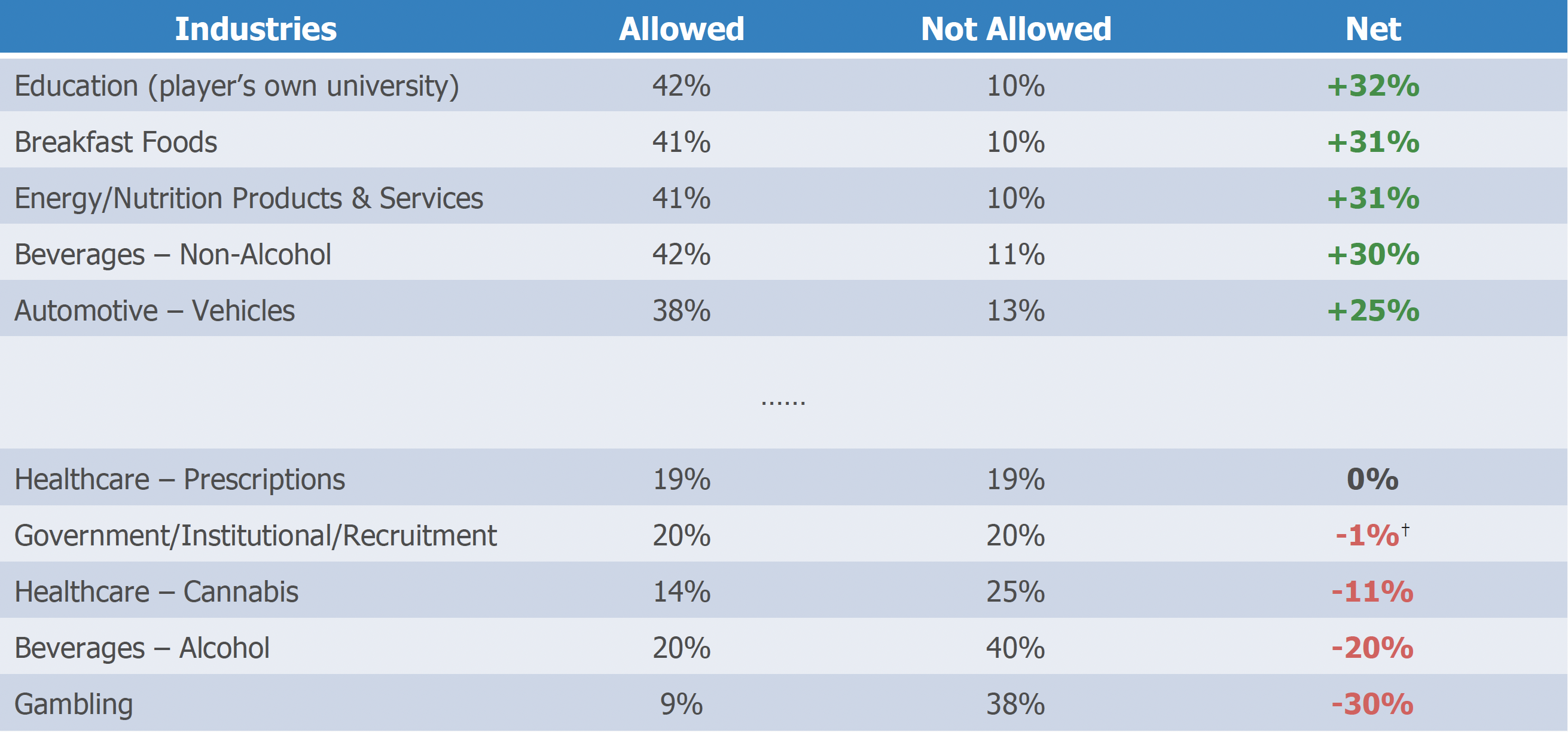
Yet while a clear ethical line in the sand is noticeable in the support for some industries over others, respondents did not have a clear memory of the deals their teams’ athletes or America’s most famous college athletes had signed. Sixty percent of those polled could not remember a single college athlete endorsement, and of the 14 percent who did recall an endorsement, a plurality could not remember any details of that deal.
However, 20 percent of the 160 people who did have knowledge of an NIL deal named social media as their primary memory of the deal. This matches Opendorse data showing “posting content” had made up 28.6 percent of NIL deals as of Oct. 31.
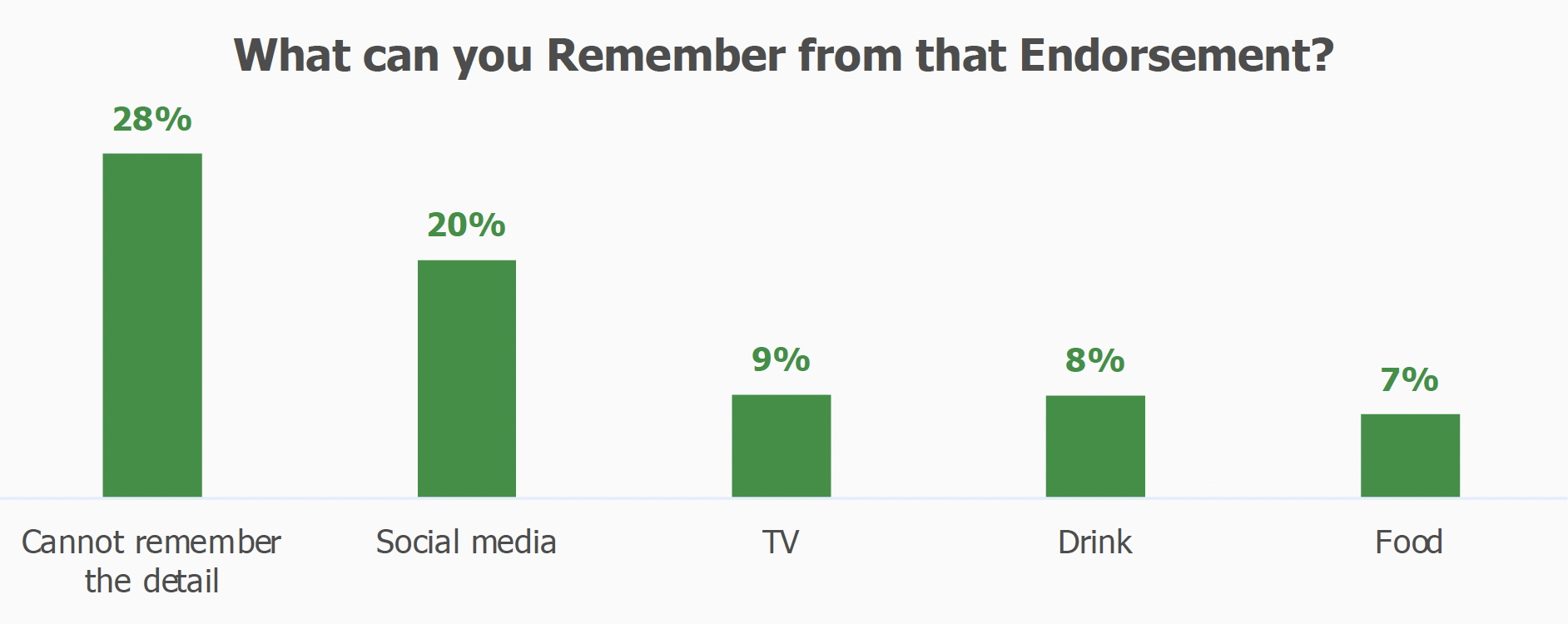
Looking more closely, respondents largely believe NIL income should be treated the same way the U.S. treats other forms of compensation. Nearly three-quarters said NIL income should be taxed, and more than half said universal regulations from the NCAA or federal government should dictate NIL opportunities.
As much as respondents were unclear about NIL at the NCAA level, there was even more confusion and hesitancy at the high school level. Forty-one percent opposed the idea of NIL deals for high-schoolers, and when asked to consider the idea of a salary cap for such contracts, a plurality preferred a lower cap for high-schoolers than for collegiate athletes.
Governments, Activists, and Athletes Responding
Thus far, Opendorse has confirmed NIL legalization in only three states: California, New York, and New Jersey. However, multiple high-schoolers have already signed deals with big sports brands such as Spalding and Puma. Though the NCAA played one of its own cards this summer by allowing such deals, high schools remain in limbo, and many continue to call for greater regulation and enforcement by Congress for college sports.
The U.S. House Subcommittee on Consumer Protection and Commerce held a hearing on NIL in October. The hearing featured testimony from NCAA President Mark Emmert and National College Players Association Executive Director Ramogi Huma, as well as from university presidents and college athletes. At the hearing, athletes rights advocates called for government intervention to level the playing field and end the exploitation they see in NCAA athletics. Athletes also testified and voiced their concerns over being left out or treated unfairly as the groundwork was laid for the NIL era.
“I know this too well as a female athlete of color currently playing women’s golf, a sport that isn’t the most lucrative or visible,” Washington State golfer Cameron March said. “This is why I feel as though it’d be wishful thinking to believe that someone like me would ever be on an equal financial playing field as a star quarterback.”
The perceived forthcoming inequity that may stem from endorsement and sponsorship deals in the NIL era is at the heart of a push from the Democratic Party to legislate the cashflow in college sports.
“Majority-White executives have long exploited the talents and labor of majority Black college athletes, but America is finally waking up to the injustices that are inherent in college athletics,” said U.S. Sen. Chris Murphy, a Democrat from Connecticut. “Giving athletes the ability to make money off their name, image, likeness should be considered the floor and not the ceiling.”
In America’s capitalist sport system, money rules, and patterns among both the people getting paid and the views of the public have taken a recognizable shape: whiter, more famous, and male. For the most part, the slow professionalization of college sports has led college sports to look more like, well, American pro sports.
“The NIL is not full economic justice,” Huma said this fall.
As a result of these changes, calls for change among those seeking true equality for collegiate athletes have only grown louder, while the public begins to reckon with a new landscape in which their big-time college football Saturdays as well as the local legends they revere are increasingly impossible to separate from money and corporate influence at all levels.
Monthly Issue
NIL & the Future of College Sports
College sports changed dramatically this year with new NCAA rules allowing athletes to profit from their names, images, and likenesses (NILs). For athlete empowerment advocates, it was a major victory—one that could prompt further reform and reorganization across the landscape of intercollegiate athletics.
How has NIL already impacted college sports, and what is on the horizon for campuses and their communities around the United States?

